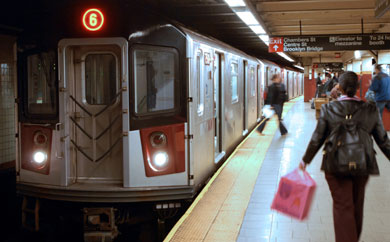
By Kevin Deutsch
[email protected]
New York City’s transit system exposes riders to more inhaled pollutants than any other subway system in the Northeast, according to a new study from NYU.
Led by NYU Grossman School of Medicine researchers, the study measured air quality samples in 71 stations during rush hours in Boston, New York City, Philadelphia, and Washington, DC. Among the 13 underground stations tested in New York, the investigators said they found concentrations of hazardous metals and organic particles that ranged anywhere from 2 to 7 times that of outdoor air samples.
The report, published online February 10 in the journal Environmental Health Perspectives, found that one underground platform – the PATH line connecting New Jersey and Manhattan’s Christopher Street Station – reached up to 77 times the typical concentration of potentially dangerous particles found outdoors. That amount is comparable to sooty contamination from forest fires and building demolition, the study authors said.
No station’s readings in other cities reached the severe levels of contamination found in New York.
“As riders of one of the busiest, and apparently dirtiest, metro systems in the country, New Yorkers in particular should be concerned about the toxins they are inhaling as they wait for trains to arrive,” adds co-senior study author Terry Gordon, PhD, a professor in the Department of Environmental Medicine at NYU Langone.
Further analysis of air samples showed that iron and organic carbon, a chemical produced by the incomplete breakdown of fossil fuels or from decaying plants and animals, composed three quarters of the pollutants found in the underground air samples for all measured subway stations, according to the study.
Although iron is largely nontoxic, some forms of organic carbon have been linked to increased risk of asthma, lung cancer, and heart disease, according to the study’s authors.
Gordon said further research is needed to assess potentially higher risk for transit workers who spend far longer periods of time in the stations than riders.
